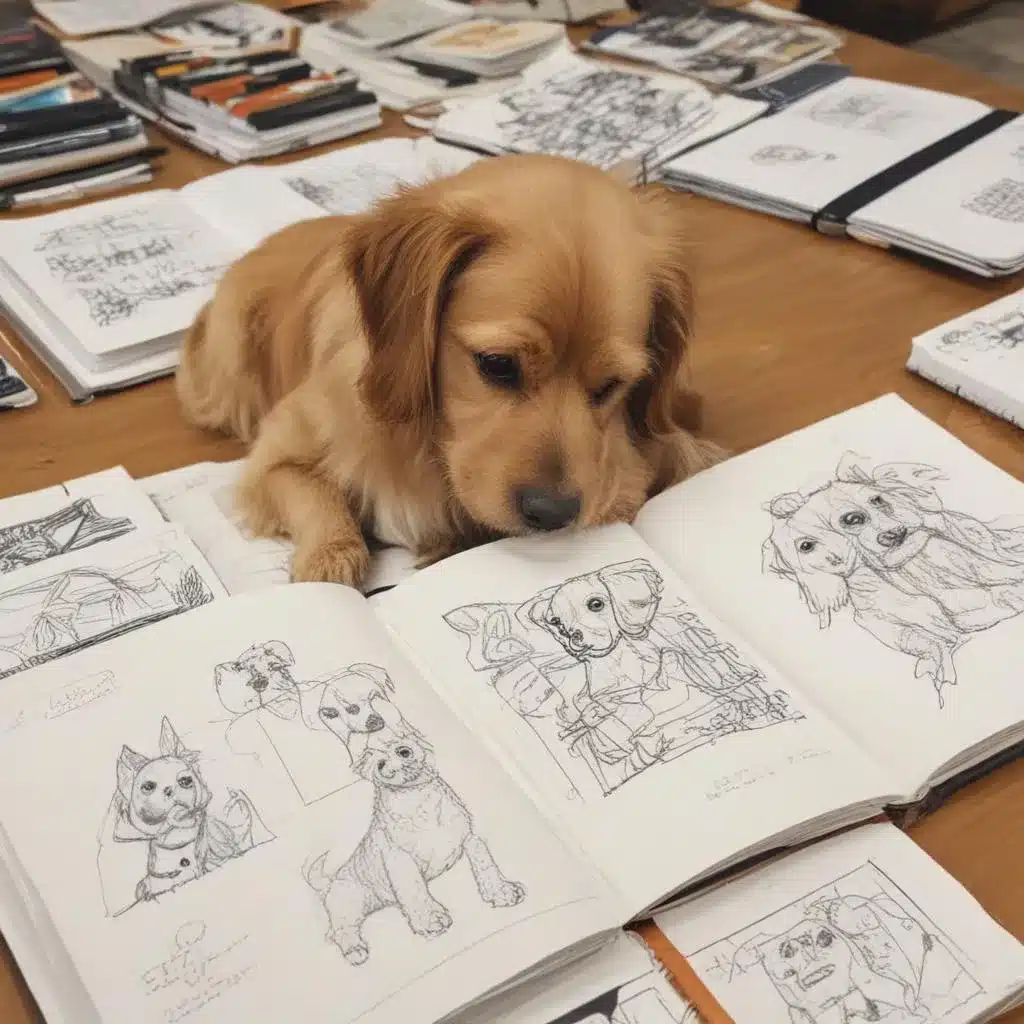
As an experienced art writer and creative consultant, I’ve had the pleasure of exploring the diverse world of artistic expression through a variety of mediums. While many artists find their muse in landscapes, still lifes, or the human form, an increasingly popular subject for nature journalers and sketchers is the beloved pet.
Now, this might seem counterintuitive…
Sketchbooks offer a perfect canvas for pet lovers to capture the unique personalities, behaviors, and intimate moments shared with their furry, feathered, or scaled companions. Far beyond simple snapshots, a sketchbook can become a visual diary – a place to explore the narrative potential of our relationships with animals through the lens of art.
Observational Drawing: Capturing the Essence of Your Pet
One of the core skills for any aspiring nature journaler is the ability to observe and render the world around them through drawing. When it comes to depicting pets, this observational approach is key to unlocking their true essence on the page.
Pencil Sketching Techniques: Whether you prefer the clean lines of a graphite pencil or the expressive qualities of charcoal, pencil-based media allow you to quickly capture the gesture, movement, and proportions of your subject. Try sketching your pet while they’re engaged in their natural behaviors – curled up napping, playing with a toy, or sitting attentively. Focus on recording the overall form and energy, rather than perfecting every detail.
Capturing Motion: Pets are often in constant motion, making them challenging but rewarding subjects to draw. Experiment with techniques like continuous line drawing, where you keep your pencil on the paper and let the line follow the subject’s movements. This can produce lively, gestural studies that convey a sense of energy. You can also try quick timed sketches, giving yourself just 30 seconds to a minute to capture a fleeting pose or action.
Detailed Renderings: Once you’ve warmed up with quick sketches, you can delve into more meticulous renderings of your pet. Pay close attention to the unique features and textures – the softness of fur, the sharp talons of a bird’s feet, the translucent quality of a fish’s scales. Use a variety of drawing tools, from fine-tipped pens to colored pencils, to bring out these intricate details.
Exploring the Narrative Potential
Sketchbooks excel at allowing artists to explore narrative – to craft visual stories that capture the emotional connections and intimate moments shared with our pets.
Character Development: As you sketch your pet over time, you’ll begin to recognize their distinct personality traits, quirks, and behaviors. Use your sketchbook to develop these “characters” – experiment with different poses, expressions, and perspectives that convey their unique nature.
Scenes and Compositions: Beyond just individual portraits, your sketchbook can become a stage for crafting meaningful scenes and compositions. Illustrate your pet interacting with their environment, engaging with family members, or experiencing a particular moment or event. Consider the overall layout and framing to create a cohesive, visually compelling narrative.
Emotional Expression: Pets have a remarkable ability to touch our hearts and enrich our lives. Use your sketchbook as a medium for exploring and expressing the range of emotions you experience with your furry (or scaly) friend – from the joyful playfulness of a puppy to the calm, reassuring presence of an aging companion. Experiment with abstract marks, expressive brushwork, and symbolic imagery to convey these deeper feelings.
Sketchbook as a Creative Playground
Beyond just observational drawing and narrative exploration, your sketchbook can serve as a versatile creative playground for pet-inspired art.
Mixed Media Experiments: Combine a variety of materials – watercolor, acrylic, collage, ink, and more – to add depth, texture, and visual interest to your pet portraits and scenes. Experiment with layering, resist techniques, and unexpected juxtapositions to push the boundaries of your sketchbook.
Personalized Journaling: Treat your sketchbook as a place for personal expression, integrating written reflections, quotes, and poetry alongside your visual explorations. This can lend an extra layer of meaning and intimacy to your pet-centric pages.
Binding and Presentation: Explore unique binding techniques, from concertina folds to hand-stitched spines, to give your sketchbook a custom, one-of-a-kind feel. This can enhance the preciousness and resonance of the work within.
Finding Inspiration and Staying Motivated
Maintaining a nature journal or sketchbook focused on pets can be a wonderfully rewarding practice, but it does require dedication and a willingness to experiment. Here are some tips to help you get started and stay inspired:
Seek Out Resources: Explore the work of other nature journalers and pet artists for ideas and techniques to try in your own sketchbook. The Nature Journal Club on Facebook is a thriving community filled with inspiring examples. Additionally, the Pencil and Paint Muse website offers a wealth of tutorials and creative insights.
Make Time to Observe: Set aside regular time to simply sit and observe your pet, whether in your home or out on an adventure. Allow yourself to get lost in the details, behaviors, and moods you notice. Jot down quick sketches, color notes, or written observations to refer back to later.
Embrace the Process: Remember that a sketchbook is a place for exploration, not perfection. Approach each page with a spirit of curiosity and playfulness, allowing yourself to experiment freely without fear of “ruining” the work. The true value lies in the journey of observing, recording, and expressing your unique connection with your pet.
By embracing the narrative potential of sketchbooks, pet lovers can unlock a rich, meaningful way to document, celebrate, and share the incredible bonds we share with our animal companions. So grab your pencils, paints, and favorite furry friend, and let the creative exploration begin!
Example: Modern Abstract Painting Series 2024